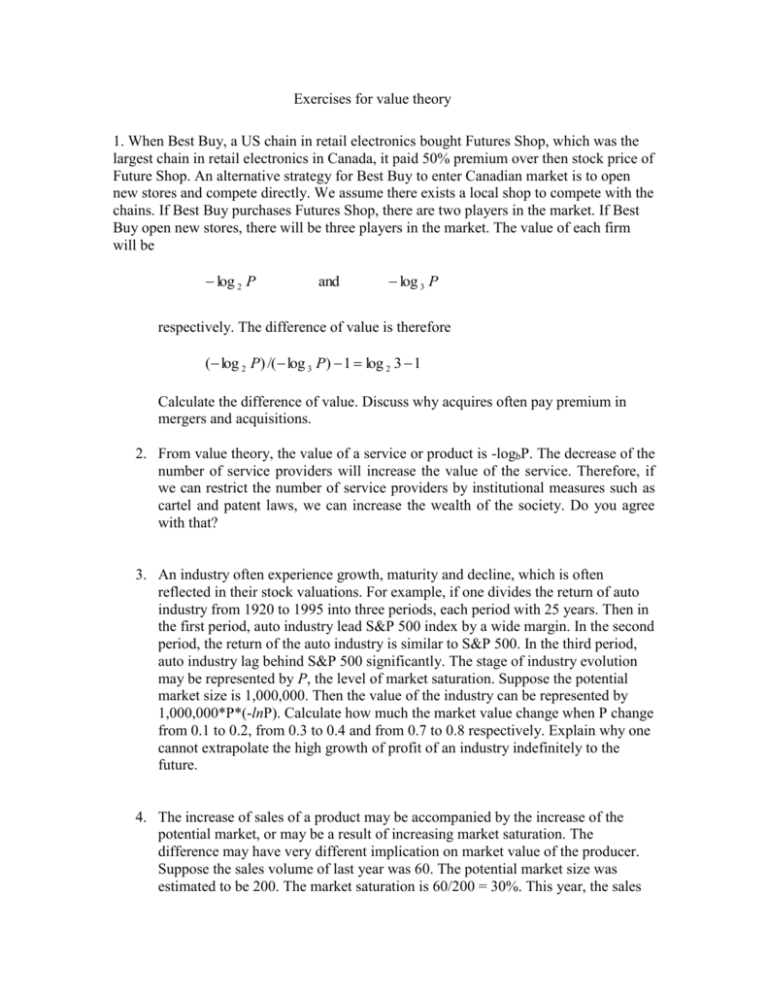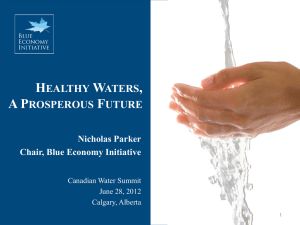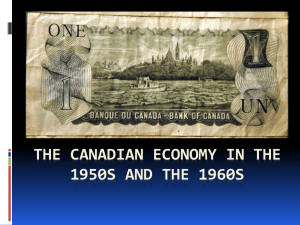Exercises for value theory
advertisement

Exercises for value theory
1. When Best Buy, a US chain in retail electronics bought Futures Shop, which was the
largest chain in retail electronics in Canada, it paid 50% premium over then stock price of
Future Shop. An alternative strategy for Best Buy to enter Canadian market is to open
new stores and compete directly. We assume there exists a local shop to compete with the
chains. If Best Buy purchases Futures Shop, there are two players in the market. If Best
Buy open new stores, there will be three players in the market. The value of each firm
will be
log 2 P
and
log 3 P
respectively. The difference of value is therefore
( log 2 P) /( log 3 P) 1 log 2 3 1
Calculate the difference of value. Discuss why acquires often pay premium in
mergers and acquisitions.
2. From value theory, the value of a service or product is -logbP. The decrease of the
number of service providers will increase the value of the service. Therefore, if
we can restrict the number of service providers by institutional measures such as
cartel and patent laws, we can increase the wealth of the society. Do you agree
with that?
3. An industry often experience growth, maturity and decline, which is often
reflected in their stock valuations. For example, if one divides the return of auto
industry from 1920 to 1995 into three periods, each period with 25 years. Then in
the first period, auto industry lead S&P 500 index by a wide margin. In the second
period, the return of the auto industry is similar to S&P 500. In the third period,
auto industry lag behind S&P 500 significantly. The stage of industry evolution
may be represented by P, the level of market saturation. Suppose the potential
market size is 1,000,000. Then the value of the industry can be represented by
1,000,000*P*(-lnP). Calculate how much the market value change when P change
from 0.1 to 0.2, from 0.3 to 0.4 and from 0.7 to 0.8 respectively. Explain why one
cannot extrapolate the high growth of profit of an industry indefinitely to the
future.
4. The increase of sales of a product may be accompanied by the increase of the
potential market, or may be a result of increasing market saturation. The
difference may have very different implication on market value of the producer.
Suppose the sales volume of last year was 60. The potential market size was
estimated to be 200. The market saturation is 60/200 = 30%. This year, the sales
volume increases by 10% to 66. If we assume potential market size stays the
same, increase by 5% or increase by 10%, what are the values of the company?
We assume company value to be represented by
MP ( ln P)
5. The valuation of a firm or industry depends not only on its current sales, but on its
potential market size. That is why growth companies are valued high. The
valuation of a firm can be thought as
MP ( ln P)
where M is the potential market size and P is the market saturation.
S MP
is the sales of the firm. The value of the firm can be rewritten as
S
) S ( ln S ) S ln M
M
From the above formula, we can see that the value of the firm is in great way depends on
the potential market size that the firm can reach. The difference in estimation of potential
market size may cause great difference is market valuation. For example, if all six billion
people will eventually drink Coke, Coca Cola will be a great growth company. If not,
Coca Cola, may be a mature company. Now suppose a company’s sales is 7 billion
dollar. If the company believes the potential market size is 100 billion, what is the value
of the company? If, however, you believe the eventual market size will be 10 billion
dollars, what is the value of the company?
S ( ln(
6. Bill Gates once said, “We don’t like stealing. But if some people want to steal, we
prefer them to steal ours.” In general, Microsoft rarely pursues legal actions in
markets that were dominated by other software. It is only when its own software
already dominate the market, it starts to establish legal claims. How to understand
it from the relation between value and market size? If there are 600 paid users
with 1,000 total users, what is the value of the software? If there are 600 paid
users with 10,000 total users, what is the value of the software? Intuitively, why
the number of total users affects the value of the product although some may not
pay for the software? Discuss the claim of software companies on the loss of
income based on the number of unpaid users.
7. The scarcity or the level of market saturation of an industry can be represented by P,
which is equal to the actual unit of output divided by the potential market size. Assume
the unit value of the product is
k ( ln P)
where k is a constant and P is the level of scarcity. The valuation of an industry is
Mpk ( ln P )
where M is the potential market size. There are two industries, A and B. Suppose the
potential market size of both industry is one billion units. Suppose k is equal to 100 dollar
per unit in both industries. Then the value of an industry can be represented by 100*P*(lnP) billion dollar. Suppose for industry A, the level of market saturation will
increase from the current level of 50% to 60% in next ten years. Calculate how
much the market value will change for industry A in next ten years. Suppose for
industry B, the level of scarcity will change from the current level of 60% to 50%
in next ten years, due to the depletion of natural resources. Calculate how much
the market value will change for industry B in next ten years. Assume you are
given two job offers from both industry A and industry B. Both offers provide
similar packages. Which offer you are more likely to accept? Why? If someone
tells you industry A is a growing industry and industry B is a declining industry
and hence industry A has a better future, what would you think?
8. Country C is a big producer of lumber while country A is a big consumer of
lumber. From value theory, the value of lumber market is represented by VP(lnP), where P is the proportion of lumber that is on the market. V, the total
volume of the forest, is 10000. For country A, increasing production will lower
the value of lumber, since the unit price of lumber is –lnP. Suppose the total fixed
cost in lumber production in country C is 110M. The marginal cost is 50% of
product value. So the total cost of production is 110+0.5*V*P*(-lnP). Total value
of the lumber products is VP(-lnP). The profit on lumber production is
VP( ln P) {110 0.5 * (VP( ln P)}
In most years, P = 1.0% . Calculate the profit of the lumber producers. Recently,
country A imposes a 27% import duty on lumber from country C. The new profit
for lumber production is therefore
VP( ln P) * (1 0.27) {110 0.5 * (VP( ln P))}
If the volume of production remains at old level of 1.0%, what is the profit on
production for country C? If the production level is increased to P = 1.2%, what is
the profit for country C? What are the old and new unit prices of the softwood
lumber? Explain how this trade policy affects the value of country C’s lumber
industry, country A’s government earning and cost of lumber to country A’s
consumers.
9. Some resources, such as oil, are very abundant in some countries and are not
widely used in other countries. For simplicity, we assume a commodity is at a
scarcity level of 90% for a market of size 500 and at a scarcity level of 0% for a
different market of size 4500. What is the total value of the commodity? If two
markets are integrated and the size of the output of the commodity is unchanged,
what is the total value of the commodity?
10. Assume the average market saturation of projects in an average company is 20%
and assume the market saturation increase 10% every year. Assume the average
market size is 10. What is the average percentage change of company value over
one year, assuming there are four competitors on one product? Assume four
companies are in a mature industry with market saturation of 50%. What is the
expected percentage change of company value over one year, assuming market
saturation increase 10% over a year? Now two companies merged, leaving the
industry with three operators. What is the expected percentage change of value of
a company over one year with this merger? Is the annual return of the merged
companies lower or higher than the market average? If the annual return of the
merged companies is lower than the market average, can we claim the merger
worsen the performance of the companies? Why?
11. Suppose Country A imports oil from ten countries and Country C export oil to
two countries. Then seller’s power to Country A can be represented as
log 10 P
and buyer’s power to Country C can be represented as
log 2 P
Suppose the values distributed among trading partners can be modeled as
buyer' s power
for buyer
buyer' s power seller' s power
and
seller' s power
for seller
buyer' s power seller' s power
In this question, the value distributed to buyer is
1
log 10 2
log 2 P
1
1
1
log 2 P log 10 P
1 log 10 2
log 10 2 log 10 10
and the value distributed to seller is
log 10 2
1 log 10 2
What percentages of values going to Country A and C respectively in their oil
trading? Suppose now Country C develop a new route of export which can reach
ten countries instead of just two. The new buyer’s power becomes
log 10 P
Please calculate the new percentages of values going to Country A and C
respectively in their oil trading.
12. The valuation of an industry depends not only on its output, but also on its scarcity. The
unit value of a commodity is
k ( ln P)
where k is a constant and P is the level of scarcity. The valuation of an industry is
Sk ( ln P)
where S is the output of the industry. Suppose Canadian oil industry’s daily output is 3
million barrel and there are 365 days in a year. Suppose k is equal to 100 dollar per
barrel. If the current scarcity level of the Canadian oil is 0.35, what is the total value of
the Canadian oil per year? If, however, with extra market access, the scarcity level of the
Canadian oil will become 0.3, what will be the total value of the Canadian oil per year?
How much will be the extra profit of Canadian oil industry with better market access,
assuming the cost of production remains the same? If you support the gateway pipeline
project, please explain your position with the calculated results. If you are against the
gateway pipeline project, use the results to explain why the current pipeline proposal, in
which BC bears all environmental risk but receives few benefits, does not fully reflect
BC interest.
13. Suppose the market size of a product is M, scarcity is p, the number of sellers is b. The
fixed cost for each seller is K, variable cost is C. Assume each seller gets the same
amount of revenue. Then the unit value for the product is
The revenue and total cost for each seller are
respectively. The return for each seller is
Suppose M = 200, p = 0.5, b = 3. The fixed cost of each seller is 4 and the variable cost
of each seller is 75% of the revenue. What is the rate of return for each seller? Now a
seller persuades the government to increase regulatory measure on this product. As a
result, the fixed cost is increased to 5.5. Assume other parameters remain the same. What
is the new rate of return for each seller? If the rate of return becomes negative, one seller
will drop off the market. Suppose now there are only two sellers in the market. Assume
other parameters remain the same. What is the new rate of return for each seller? Explain
how financially strong companies can use regulatory tools to reduce completion and
achieve high rate of return.
14. A refinement from last question. Suppose b=3. At what level of fixed cost, the return of
each seller will become zero? What is the new rate of return for each seller when only 2
sellers are left? Now assume C = 60%. All other parameters remain the same. At what
level of fixed cost, the return of each seller will become zero? What is the new rate of
return for each seller when only 2 sellers are left? What conclusions we can get?
15. Total value of a commodity depends not only on its output, but also on its scarcity. The
unit value of a commodity is
k ( ln P)
where k is a constant and P is the level of scarcity. The valuation of an industry is
Sk ( ln P)
where S is the output of the industry. Suppose k is equal to 100 dollar per barrel. Scarcity
is defined as total output divided by potential market size. In 2013, Canadian oil’s daily
output was 4 million barrel and there are 365 days in a year. Suppose the potential
market size of Canadian oil is 10 million barrel per day. Calculate the price of Canadian
oil per barrel? What is the total value of the Canadian oil per year? In 2013, world oil’s
daily output, excluding Canadian oil, was 86 million barrel. Suppose the potential market
size of world oil, excluding Canadian market, is 230 million barrel per day. Calculate the
price of world oil, outside Canadian market, per barrel? What is the total value of the
world oil, outside Canadian market, per year? If, however, with extra market access,
Canadian oil market will become an integrated part of the world oil market. What is the
new scarcity level of the world oil market, calculated as the ratio of total world output
divided by the total world market size? What would be the new world oil price per
barrel? What would be the total value of the Canadian oil per year in this scenario? How
much will be the extra profit of Canadian oil industry with better market access,
assuming the cost of production remains the same?
16. Suppose the cost of oil production per barrel can be represented as a + b* (k*(-ln(p)),
where a and b are positive constants, k*(-ln(p)) is the oil price per barrel. We set k to be
100. Different oil producers have different cost structures. Now consider two
representative oil producers. For the first one, (imagine conventional oil producer), a =
10, b = 0.1. For the second one, (imagine shale oil producer), a = 40, b = 0.3. When p
=0.5, what are the profit/loss of the two oil producers on per barrel of oil? When p =0.6,
what are the profit/loss of the two oil producers on per barrel of oil? Explain why low
cost producers can drive out high cost oil producers by increasing output of oil.
17. Total value of a commodity depends not only on its output, but also on its scarcity. The
unit value of a commodity is
k ( ln P)
where k is a constant and P is the level of scarcity. Total value of a commodity is
Sk ( ln P)
where S is the output of the industry. Suppose k is equal to 100 dollar per barrel. Scarcity
is defined as total output divided by potential market size. In a year, Canadian oil’s daily
output was 4 million barrel and there are 365 days in a year. Suppose the potential
market size of Canadian oil is 6 million barrel per day. Calculate the price of Canadian
oil per barrel? What is the total value of the Canadian oil per year? In this year, world
oil’s daily output, excluding Canadian oil, was 90 million barrel. Suppose the potential
market size of world oil, excluding Canadian market, is 140 million barrel per day.
Calculate the price of world oil, outside Canadian market, per barrel? What is the total
value of the world oil, outside Canadian market, per year? What is the total value of the
world oil, including Canadian market, per year? If, however, with extra market access,
Canadian oil market will become an integrated part of the world oil market. What is the
new scarcity level of the world oil market, calculated as the ratio of total world output
divided by the total world market size? What would be the new world oil price per
barrel? What would be the total value of the world oil per year in this scenario? What is
the difference between total values of oil when the market is segregated and when the
market is integrated? Explain why producers generally prefer an integrated worldwide
market.







